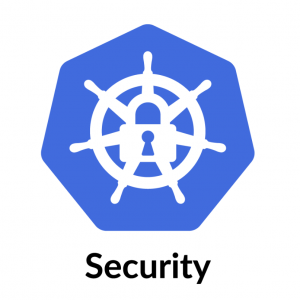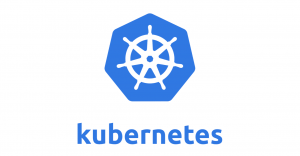Kubernetes is a popular open-source platform for managing containerized applications. One of the key features of Kubernetes is its ability to automatically scale and manage the availability of applications and services. However, as with any distributed system, it is important to have a robust backup and restore strategy in place to ensure that data and configurations can be recovered in the event of a failure or disaster.
There are several different methods for backing up and restoring data in a Kubernetes cluster. These include:
Snapshotting
This method involves taking a snapshot of the entire cluster, including all pods, services, and configurations. This can be done using tools like Velero, which is a popular open-source tool for Kubernetes backup and restore. Snapshotting can be useful for quickly restoring a cluster to a previous state, but it can also be resource-intensive and may not be suitable for large clusters.
Install Velero on your cluster:
$ kubectl create namespace velero $ kubectl apply -f https://raw.githubusercontent.com/vmware-tanzu/velero/main/examples/common/00-prereqs.yaml $ kubectl apply -f https://raw.githubusercontent.com/vmware-tanzu/velero/main/examples/common/10-velero.yaml
or
To create a snapshot of a Kubernetes Persistent Volume (PV), you can use the kubectl snapshot command. Here is an example of how you might create a snapshot of a PV named my-p
kubectl snapshot create my-pv-snapshot --snapshot-class=my-snapshot-class --source-pv-name=my-pv
This command creates a snapshot named my-pv-snapshot of the PV named my-pv. The --snapshot-class flag specifies the snapshot class to use for the snapshot.
You can also create a snapshot of a StatefulSet,
kubectl snapshot create my-snapshot --snapshot-class=my-snapshot-class --snapshot-volumes=all --all-namespaces -l app=my-statefulset
This command creates a snapshot named my-snapshot of all volumes of the StatefulSet with the label “app=my-statefulset” in all namespaces.
You may need to check the availability of the snapshot feature in your kubernetes cluster, and also check for the compatibility of the snapshot class with your k8s version and infrastructure.
Volume Backup
Kubernetes uses persistent volumes (PVs) and persistent volume claims (PVCs) to store data. Volume backup methods involve creating backups of specific PVs and PVCs. This can be done using tools like Heptio Ark and Restic. These methods are more granular than snapshotting and allow for more fine-grained control over data recovery.
Install Heptio Ark on your cluster:
$ kubectl apply -f https://raw.githubusercontent.com/heptio/ark/v0.10.2/examples/common/00-prereqs.yaml
$ kubectl apply -f https://raw.githubusercontent.com/heptio/ark/v0.10.2/examples/common/10-deployment.yaml
Configure Heptio Ark to use a cloud provider or object storage to store backups. For example, to configure Heptio Ark to use an S3 bucket for storage, you would need to create an S3 bucket and then create a Heptio Ark-specific IAM user and assign the appropriate permissions to that user.
Create a backup of a specific Persistent Volume or Persistent Volume Claim:
$ ark create backup <backup-name> --include-namespaces <namespace-name> --include-resources <pv-or-pvc-name>
Heptio Ark will then create a backup of the specified PV or PVC and store it in the specified storage locationVerify the backup has been created:
$ ark describe backup <backup-name>
You can also schedule backups to run at specific intervals using Heptio Ark’s built-in scheduling feature.
It is worth noting that Heptio Ark also allows to restore a backup to a specific point in time and to restore a backup to a different cluster. Additionally, Restic can also be used to take volume backup of Kubernetes and it provides an option to encrypt the data before storing it in the storage location.
ConfigMap and Secret Backup
ConfigMaps and Secrets are Kubernetes resources that store configuration data and secrets. These can be backed up using the kubectl command-line tool or using a tool like Helm.
Use the kubectl get command to list all ConfigMaps and Secrets in the cluster:
$ kubectl get configmaps $ kubectl get secrets
Use the kubectl get command with the -o yaml flag to export the ConfigMap or Secret as a YAML file:
$ kubectl get configmap -o yaml > configmap-backup.yaml
$ kubectl get secret -o yaml > secret-backup.yaml
Store the YAML files in a safe location, such as a remote backup server or cloud storage service.
You can also use a tool like Helm to automate the backup process and schedule it to run at specific intervals. For example, Helm provides a feature called “Helm Chart Repositories” that enables you to version your ConfigMaps and Secrets and store them in a Helm repository.
It’s worth noting that it is important to encrypt sensitive information, such as secrets, before storing them in a backup location, to ensure that they cannot be accessed by unauthorized parties.
Another alternative is to use a tool like kubecfg which allows you to easily backup and restore ConfigMaps and Secrets, as well as other Kubernetes resources, in a simple and secure way.
StatefulSet Backup
StatefulSets are a Kubernetes resource that provides guarantees about the ordering and uniqueness of pods. Backing up StatefulSets can be done using the kubectl command-line tool, or using a tool like Velero.
Use the kubectl get command to list all StatefulSets in the cluster:
$ kubectl get statefulsets
Use the kubectl get command with the -o json flag to export the StatefulSet as a JSON file:
$ kubectl get statefulset <statefulset-name> -o json > statefulset-backup.json
Store the JSON file in a safe location, such as a remote backup server or cloud storage service.
You can also use a tool like Velero to automate the backup process and schedule it to run at specific intervals. For example, Velero allows you to take a snapshot of a specific StatefulSet and its associated PVs and PVCs and store them in a specified storage location.
It is important to note that the StatefulSet backup alone is not enough if you want to recover the entire state of the system, as it doesn’t include the configurations, services and other resources in the cluster. It is recommended to have a full cluster backup including StatefulSet and other resources using Velero or other backup tools.
It’s also worth noting that it is important to encrypt sensitive information, such as secrets, before storing them in a backup location, to ensure that they cannot be accessed by unauthorized parties.
It is important to note that backup and restore strategies should be tested regularly to ensure that they are working as expected and that data can be successfully recovered. Additionally, backup data should be stored in a safe and secure location, such as a remote backup server or cloud storage service, to ensure that it is not lost in the event of a disaster.
In conclusion, Kubernetes provides several options for backing up and restoring data, including snapshotting, volume backup, ConfigMap and Secret backup, and StatefulSet backup. Choosing the right method depends on the specific requirements of your application and the resources available in your cluster. Regular testing and secure storage of backup data are also important considerations.



